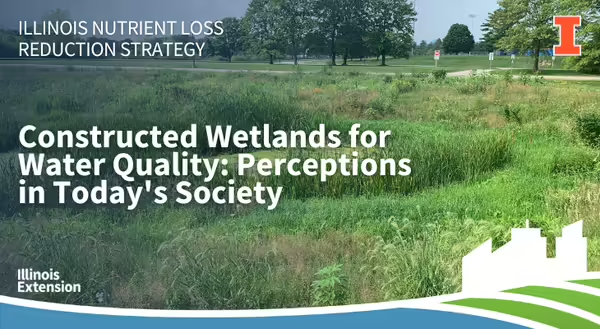
Wetlands are some of the most vital yet misunderstood ecosystems, often portrayed in films as eerie, dangerous places rather than the biodiverse habitats they are. Why is that? University of Illinois researchers are working on understanding wetland perceptions, their ecological importance, and efforts to improve public understanding while also providing educational opportunities.
Wetland perceptions
Films often portray wetlands negatively, bringing about negative preconceptions about these ecosystems and corrupting or exaggerating them for dramatic effect. Jeff Matthews, University of Illinois, recently published a research paper on how wetlands are portrayed in film with Jack Zinnen, Illinois Natural History Survey. The team identified 163 films released between 1980 and 2019 that depicted swamps, marshes, bogs, or another type of wetland and were often used as plot elements. The main finding from their study was that wetlands were primarily portrayed negatively. Death is one of the most common themes in wetland scenes; however, some movies portray wetlands positively.
Read more in the article, How swamps on the silver screen reflect how we feel about wetlands.
The ecological importance of wetlands
Wetlands offer numerous valuable benefits to both society and the environment. Wetlands are natural sinks within a landscape and can collect runoff from their surroundings while providing other ecosystem services. They can store floodwaters and remove nutrients from runoff while also providing habitat for diverse wildlife and maximizing biodiversity. Constructed wetlands are an NLRS-approved edge-of-field practice to capture nutrients leaving an agricultural field through plant uptake, microbial activity, and sediment settling, which can improve water quality. Wetlands can also capture nutrients from stormwater runoff in urban settings.
How does the public understand wetlands?
Many people have only a connection to wetlands through film, and the negative depictions could continue the aversion to wetlands and possibly hinder conservation efforts. One way Matthews suggests changing the perception is for people to visit a wetland firsthand to witness the negative stereotypes in the film that are not necessarily accurate of actual wetlands. One possible location to visit a wetland is the Emiquon National Wildlife Refuge and Emiquon Preserve in central Illinois. Matthews also suggests viewing films more positively portraying wetlands, like Shrek and The Princess and the Frog.
Learn more about wetlands
University of Illinois recently started a wetland science and conservation certificate taught by Dr. Caitlin Bloomer. The courses focus more heavily on the cultural importance of wetland ecosystems. The certificate allows this educational opportunity to be offered to a broader audience, but a bachelor's degree is a prerequisite. The purpose of the certificate is to prepare individuals for wetland careers like restoration, planning, and managing state conservation areas. The course credits can also be applied toward an online master’s degree. For those not sure if the certificate is the right path, four short modules are currently available on Coursera, with two more coming out at the end of February 2025, so you can learn at your own pace. These courses can play into the certificate.
About the authors
Rachel Curry is an Agriculture and Agribusiness Educator specializing in agriculture and watershed education, and she is part of the Illinois Extension's Nutrient Loss Reduction Strategy implementation team. She holds a B.A. in Environmental Studies from Knox College and an M.S. in Environmental Science and Soil Science from Iowa State University, focusing on soil fertility. Her work centers on education and outreach related to the Illinois Nutrient Loss Reduction Strategy, promoting agricultural conservation practices that reduce nutrient loss while enhancing water quality and soil health across Illinois.
Nicole Haverback serves as a Watershed Outreach Associate and is an Illinois Extension team member implementing the Nutrient Loss Reduction Strategy. She holds a B.S. in Agriculture and Rural Policy Studies from Iowa State University. In her role, Nicole coordinates watershed management and planning efforts aimed at reducing nutrient losses in priority areas, offers expertise on best management practices to minimize nutrient loss, and leads outreach initiatives promoting agricultural conservation practices outlined in the Illinois Nutrient Loss Reduction Strategy.
About the blog
At Illinois Extension, we’re working to improve water quality at home and downstream. Every month, our Watershed Outreach Associates will bring you stories highlighting agricultural conservation practices, current research projects and results, and from the field farmer interviews. The Nutrient Loss Reduction blog covers conservation practices recommended by the Illinois Nutrient Loss Reduction Strategy, timely updates, farm safety, and new decision tools to help farmers and producers reduce the nutrients leaving their field.